
|   |

|   |
Sampradaya - Propagating traditions - Dr. Hareesh N. Nampoothiri e-mail: newn.haree@gmail.com September 12, 2020 Online events are the new norm, and it seems like we will take much longer to come out of the situation. Live programs are happening all around, and the informal or impromptu presentations in the initial months have now given way to more organized and curated dance festivals. Mohiniyattam may not have got much attention earlier, but in the last few weeks, multiple events were focusing solely on Mohiniyattam. One among them was 'Sampradaya' organized by Spreepadmam School of Dance based in Fremont, California. Curated by Mohiniyattam dancer Bhairavi Nedungadi, the five-day-long festival featured talented disciples of gurus from multiple schools. While it is true that the social platforms have opened the space to many talents, all that comes online are not watch worthy. However, the organizers of 'Sampradaya' made sure that all the participants are equally proficient in the respective repertoire. And it turned out to be an elegant display of all schools together, with the practitioners sharing their thoughts after each performance. Delineated in style 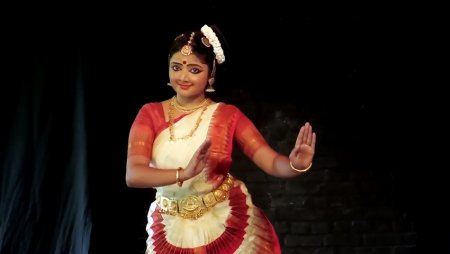 Sandra Pisharody Sandra Pisharody, the disciple of Guru Nirmala Paniker, performed on the opening day. What if you are offered with some sandalwood paste, golden in colour and has the fragrance of rose water, something which healed the fainted Lord Shiva when he consumed the Kalakuta poison? The nayika in the 'Chandanam' piece has this exquisite sandalwood paste to offer, and Sandra Pisharody's presentation was equally soothing. Nirmala Paniker's style focuses more on the theatrical aspects. The innovation comes in reimagining the forgotten pieces or the Desi tradition and making them relevant for the times. Like in 'Chandanam' she contextualises it in the premise of the churning of the Ocean of Milk. The dancer gets minimal chances to break free and impress the viewers with some fast-paced moves. Even to present the ferocious Kali, the dancer hardly makes any vigorous moves. And it was the holistic approach - through the body movements, postures, expression, eyes, along with the percussion and modulated singing - that made it intense. Sandra has absolute faith and commitment in her guru's repertoire, and it could be the primary reason why she excels almost every time. Sandra also came good in the in-between dance portions in the main piece and the cholkettu in Sankarabharanam at the beginning. A limited delight 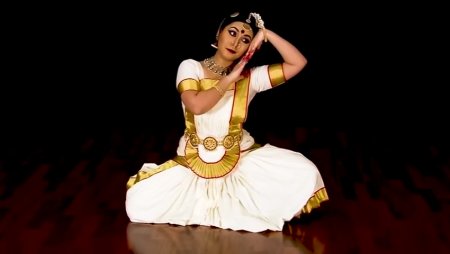 Malavika Menon The dance itself is a medium, and when presented through the medium of video, whether the artistes like it or not, a few more things than the actual dance decide its effectiveness. The videography combined with the use of a widescreen resolution proved to be a limiting factor in Malavika Menon's streamed performance video. However, when the camera covered the space in full, with the dancer entirely in the frame, it was pleasant to watch Malavika dance. Especially with the unique aharya adopted by her guru Vinitha Nedungadi, which made the footwork more striking, the starting Mukhajalam in Panchari tala and the dance sequences in the varnam that followed were a visual delight. Malavika chose to present 'Gitanjali' - one of the much acclaimed choreography work of Vinitha Nedungadi as the main piece. Selected verses from G. Sankara Kurupu's translated version of Tagore's original poem gets musically set and presented as a varnam here. The item got a gentle treatment, and it was the soft tones of longing and aspiration that the dancer explored. By giving the right blends of expressions along with the spirited dancing striking picturesque postures in between, Malavika impressed. Alas, it would've been much better, if recorded and presented suitably. The dancer and organizer later clarified that the mentioned issues with the video was because of some technical glitch at the time of streaming, which they couldn't resolve at that point. Complexity galore 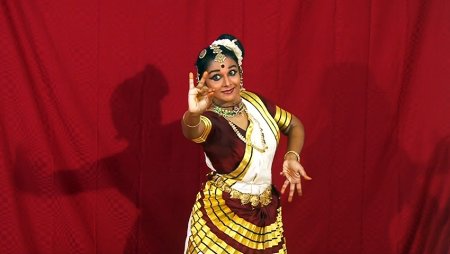 Vidya Pradeep It wouldn't be wrong to say that the style of Neena Prasad is convoluted - in a good sense. The rhythmic and musical patterns, and on top the choreography has many a characteristic which crave for perfection. As a disciple of Guru Neena Prasad, Vidya Pradeep had this challenge of bringing precision while not losing on the aesthetics or the underlying emotions. Vidya was up to the task, and the presentation turned into a striking one. The opening cholkettu in raga Kedaragaula was only a hint of what was in store. The sakhi, who's concerned about the state of the heroine makes a sincere appeal to Lord Padmanabha, to show kindness to her. Swathi Thirunal's "Sa para vivasha..." in Madhavan Nampoothiri's voice, rendered in raga Mukhari, was in itself a worthwhile experience, and Vidya's dance was an embellishment to the set mood. The choreography had a lot of instances, where the sakhi narrates and reflects her friend's state. It was the dancer's involvement and eye for the details that made the piece so absorbing. True to tradition 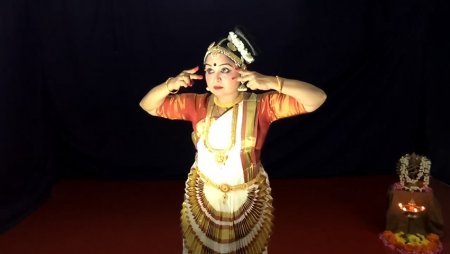 Prasheeja Gopinath Kalamandalam Prasheeja Gopinath representing the style of her alma mater had the dance interpretation of an ashtapadi and a thillana to offer. "Yahi Madhava, yahi Keshava...", Prasheeja began with a concise prelude setting the situation. Radha awaits Krishna the whole night, but he only comes to her in the morning. As the item progress, Radha, in all her despair, starts to condemn Krishna's earlier acts of relating with the other women and the killing of Poothana. Prasheeja's take on Radha, as a khandita nayika, was matured and without overdoing the expressive part. She certainly made an impression. Her Radha was well mannered, unlike those Radhas who irritably show Krishna the way out. However, while narrating the Poothana story, the dancer could've followed an approach without the kind of elaboration. As the ashtapdi didn't give much scope to have pure dance sequences, it was only logical to go for a thillana as the next item. Prasheeja's presentation of Swathi Thirunal's Dhanasri thillana could be called old-school, but still appealing, to at least those who could appreciate the unhurried style. Missing the point 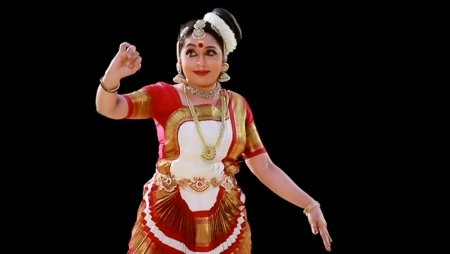 Sumitha Nair Sumitha Nair, who's a disciple of Guru Kalamandalam Kshemavathy, follows a style which is visibly more spirited and lively. For those who are accustomed to the slow or moderately paced form of it, this could feel like the dance form on steroids! The oft-seen "Ananda Ganapathiye..." in Puraneeru certainly allows a dancer to dance to her heart's content, and Sumitha did the same. 'Saptanayika' portraying the seven heroines crafted out of Jayadeva's Gita Govindam was the main item. And in this piece, the treatment took away the delicacy of the expressions as well. The concept might have worked if she did it with involvement, rather than exaggerating every instance during the course. For this streamed version, however, one might be able to find the heroines in a technical point of view, but whether there was any relating to Radha or her sakhi, or as the poet sees them remained doubtful. Artists in conversation One unique feature of the festival was each performance followed with an interactive session with the dancer. It was more on the general lines, based on a few set questions, mostly touching their learning experience, the uniqueness of their style, and their experiences with their gurus. Thus, it would've been more appropriate if the interaction happened first and then went on to the presentation, giving the viewers a chance to keep an eye on what they've shared. The sessions did bring up some interesting aspects - some shared by all schools while others distinctive to each tradition - on the respective repertoire, the training techniques, approach to choreography, and so on. The first two interactions were in English but switched to Malayalam in the last three, which might have created some problems to non-Keralites. The pre-recorded performances and interactions were streamed live through the Facebook page of Spreepadmam School of Dance on the last two weekends of August 2020.  Dr. Hareesh N. Nampoothiri is a visual design consultant by profession, an art lover by obsession and an author, writer, photographer, editor, lyricist, and director by passion. He is also the founder and chief editor of Artograph, a bimonthly e-magazine on arts. |